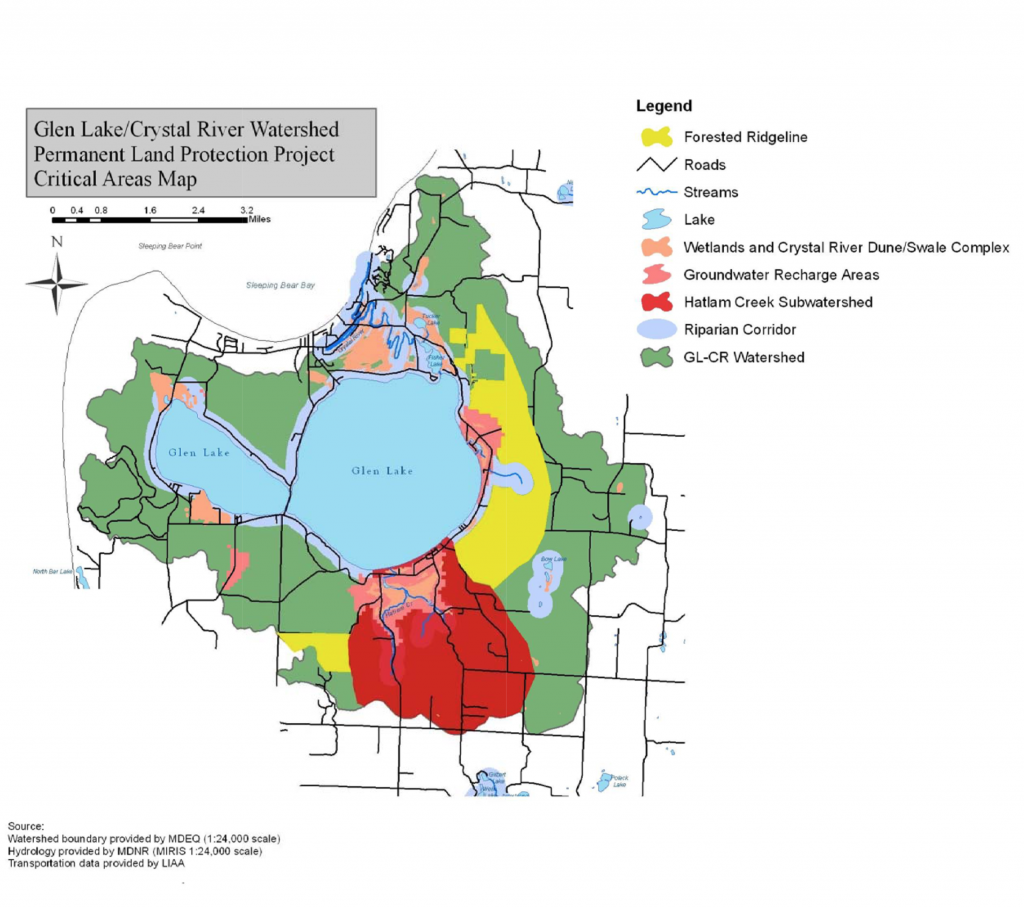
Is all the land that drains water into Glen Lake and the Crystal River “created equal?” No. Are there portions of our watershed more critically and ecologically sensitive than others? Yes. Critical areas can be defined as portions of our watershed that have the greatest likelihood to affect water quality and aquatic habitat. The watershed map here shows the critical areas that in sum total equal about 25% of our watershed.
There are five categories of critical areas that include the following:
- Riparian Corridors: (Blue) An area that includes land from the shoreline to a 1,000 foot setback boundary for Glen Lakes, Fisher Lakes, Crystal River, and Hatlem Creek.
- Forested Ridgelines: (Yellow) These are the steep, forested slopes that harbor permeable soils susceptible to erosion that drain into the lake.
- Hatlem Creek Subwatershed: (Red) An ecologically rich, diverse, complex wetland that drains into Glen Lake via Hatlem Creek
- Crystal River Dune/Swale Complex: (Orange) An area classified globally as a rare and complex ecosystem.
- Groundwater Recharge Areas: (Pink) Areas where the fastest and largest quantity of groundwater enters Glen Lake.
Central to the mission of the Glen Lake Association is to ensure that these critical areas are not degraded. Fortunately, much of these critical areas lay within the boundaries of the Sleeping Bear Dunes National Lakeshore and will be preserved and protected for generations to come. However, the Riparian Corridor, where homes occupy nearly 98% of buildable lots along the shore, can pose a significant threat to water quality. Also, areas of strong groundwater recharge mean what you do to your land will impact the surface water of the lake very quickly.
If you live within any of the boundaries of these critical areas of our watershed, consider taking the pledge to protect and join our Glen Lake Guardian program. By doing so, it will provide our waters with the best protection we can offer. After all the lake and river give us, shouldn’t we in turn give back by living responsibly? It is a win-win for both.
For more information about critical areas in a watershed click here.
Recent Comments